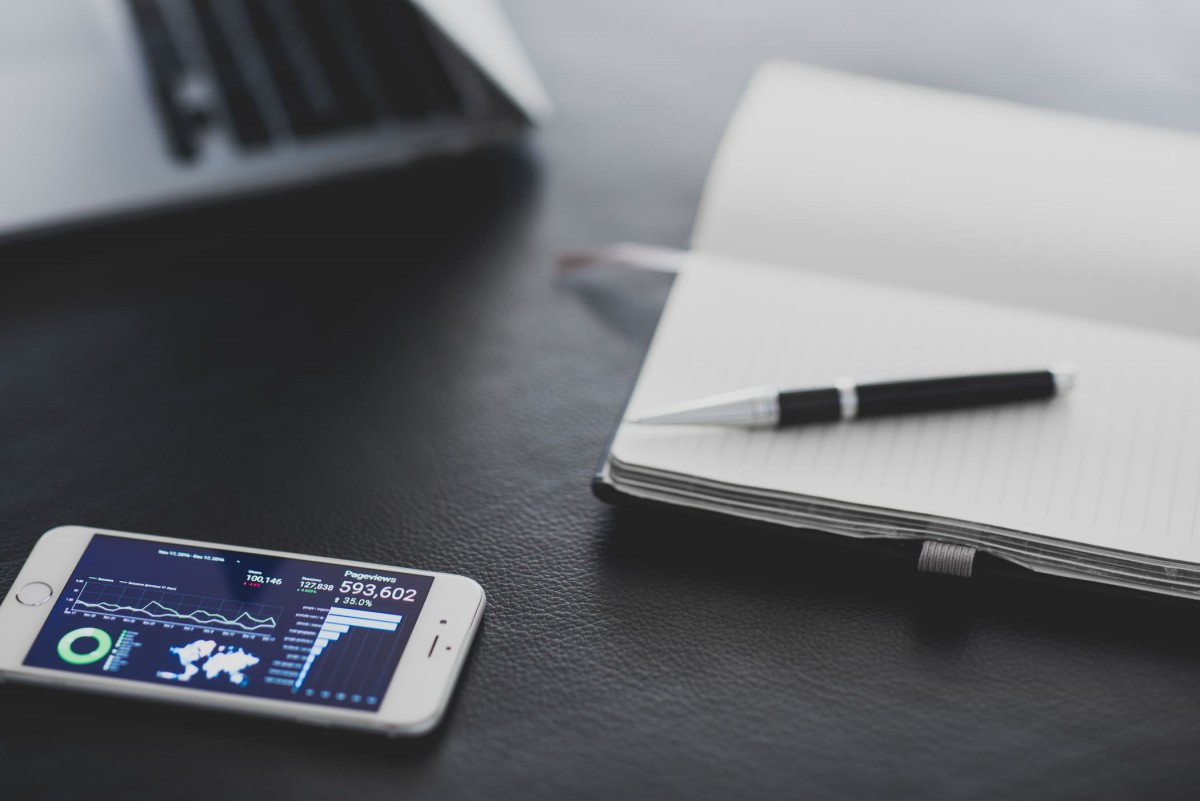We have a lot of input options. Each with a different set of tradeoffs. Which option is more useful for speedwriting? What should we do in a class and in a conference room? How should we brainstorm? So many choices!
Cannot go wrong
I want to start with a very simple statement: whatever tool you choose it will be OK. Our notetaking tools are very efficient and cost-effective. Any tool is better than no tool at all. Cheap disposable tools are often better than fancy tools.
The choice is more of fine optimization and important details. Moreover what will work for most, may not work specifically for you and this is also perfectly OK. Yet, there is a lot of experience and ideas you may want to hear.
Use a big computer when you can
I mean it. A nice mechanical keyboard, between two and four huge screens… A BIG computer is the perfect productivity tool. For me, it is my laptop, Alienware R5, which I have my cables hooked into.
The main benefits are not what you think:
- High typing speed. Well, that one was obvious.
- The content is backed up on a cloud (I use google docs): reliably stored, searchable, with version control. Each of these qualities is super-important!
- Instant and global collaboration per document whenever needed.
- Comfortable colors and annotations.
- Virtually unlimited space
- Hyperlinking external resources
You really need a good reason to choose anything else, and there are plenty of great reasons.
Ultimate fun with a fountain pen
Some people (usually, introverts) want to really OWN their words. Everything online feels mass-produced, searchable, universally available. For our deepest emotional content, we want something very personal, disposable, cute. And here we go as lowtech as we get in this article: fountain pen, calligraphy on quality paper. Typically in a diary. Often with custom and personal ink mix. Why? Because this is the ultimate literary intimacy.
An old-school diary is much better for emotions than advanced high-tech stuff. The golden rhodium plated nib simply glides on quality paper. It is as joyful as eating a croissant and drinking coffee on a rainy autumn day.
You will probably keep everything written this way secret, never upload or share it, and possibly read it very rarely, but you will absolutely love the experience.
Mobility, mobility, mobility
Our mobile device is always with us. If you doodle you may consider a larger tablet with a stylus, and if you do not need a heavy device a small iPhone will do.
I have iPhone SE and it is good enough for my needs. Up to three lines of text, capturing the latest thought anytime anywhere, usually in Gmail (mail to myself), Whatsapp or Telegram application.
With a phone, it is quite often near the coffee machine, literary in the washing room or in my bed. A tablet allows better reading and annotating, and is best used as a second screen on a sofa in front of TV.
Sometimes I write in my ipad pro during a photosession, when the ipad is on the teleprompter. It is fine.
This is a very inferior choice in every sense, except one: MOBILITY. Always connected, always ready…
Usually, I have to rewrite and process these ideas near a big computer later. But that’s OK.
Brainstorming
There are several options useful for brainstorming.
- A big whiteboard and erasable colorful markers. Usually with several other people in a conference room. This is a very open position, prone to quick thoughts but too open for deeper considerations.
- A rollerball pen and a cheap paper block. There is nothing final in this configuration. I write ideas and draw mindmaps, and then go to the next page and reiterate. The whole effortless imperfection of this process is amplified by doing it while drinking a cup of coffee on a balcony.
- Lead holder and graph paper. For me personally, a 3.2mm lead holder works better than other pencils, as it allows wide lines which can be immediately erased. Very cool for reiterating on a complex flow-chart. Thinner mechanical pencils imply some sort of precision, which should not be a part of any brainstorming.
To be honest, I usually brainstorm with a powerpoint presentation, moving around colorful blocks. Yet I do not feel that powerpoint with its infinite boxes is useful for out-of-the-box thinking.
Nature calls
Outdoors I often like gloves-friendly devices. A Fisher spacepen writes everywhere in every weather. If it has a stylus, I can press buttons on my phone without taking my gloves off. I can also use the voice recording option. Works well also when driving.
Honestly, this is more of a theoretical scenario for me, like once in a blue moon on a ski resort. I do not go outdoors unless the weather is near-perfect, and in the Tel-Aviv area, nearly every day is a sunny day.
When I go outdoors, I usually do this with people I love and enjoy interesting conversations with. Especially when I travel to other countries and exotic locations.
In emergency situations, I usually relied on my memory or wrote on my hand with a parker jotter pens. I never had a chance to actually prepare.
Tinkering
For tinkering nothing can beat a combination of graph paper, parker jotter bolt pen and a 0.5mm mechanical pencil. This combo is great for designing furniture and redecorating home. Everything is accurate, large scale, and can be used on every critical spot: target location, equipment manufacturer, and dinner table.
A stylus or computer mouse and design software can be better, but they are professional tools. Simple home tools are better for simple designs. Everybody understands them and their use, and if they get lost or broken, so what?
Typically we use software to finalize and print the original design, but then use the printed versions of the design for negotiations, corrections, and brainstorming.
Doodling
Doodling can work anywhere with anything. There is just one issue: the pollution we create.
When we fidget with a parker jotter, clicking and unscrewing it, we may generate noise. When we doodle with a fountain or rollerball pen, there are stains. Doing that with a mechanical pencil we tend to break the lead refill more than we would like to admit. A lead holder will always need sharpening generating unnecessary garbage.
So basically the best solution is a ballpoint or gel pen with twist or bolt-action mechanism. It is unbreakable, quiet, and always reliable. We can also use it for action items and to write down what the presenter has to say. It is really a great option.
Also consider taking with you a dedicated fidget, like a ring, to play with when not doodling. My kids often take small mechanical spinners.
Stenography
Less used today but was my main reason to bring a pen as a child. I used to write everything and generated very detailed protocols. This has several functions:
- When writing, since it is an active process, memorizing becomes easier. Moreover, my own writing is a visual marker. Consider an additional color pen to make the text more memorable.
- A pen or a pencil used for A LOT of writing needs to be ergonomical. This often implies soft grips, very specific weight, and balance. Usually, the tip of the pen needs to be a bit heavy to stay on the paper. This is just the opposite of what we need in a pen used for signing.
- The ink needs to dry immediately, stay visible and preserve color for a very long time.
- Use a forgiving device. Do not use a pen that is not heavy enough, since it amplifies every imperfection in calligraphy.
Today, many students use very light laptops to type instead of writing, often with a stylus for diagrams and illustrations. These laptops do not have the luxury of a noisy mechanical keyboard or a large screen, but for the classroom they can be perfect. Laptops can also allow a combination of stenographic with other activities, like texting with other participants.
There is often no point actually filming the lectures since most lectures are already filmed. However, our notes are easier to search than videos. Especially if the lecturer does not use enough visuals.
Dictation
We type around 100 words per minute but talk about 300 words per minute. This means that dictation is much faster than actual writing, especially if your voice and accent are clean and friendly for AI. So many people have a very strong tendency to dictate all their texts. However…
Storytelling and formulation in writing and in talking are very different. When we dictate, the editing afterward can get tough. Moreover, if our voice is special or the environment is noisy, the automatic speech to text will fail.
I really hate those people who leave voice messages in WhatsApp. I do not have an environment with headphones to listen to them. So usually I simply delete their messages. Without listening. Or delay listening for many hours. Now, driving and dictating are very natural. However, the person on the other side of your communication may be much less thrilled with that, especially if he is without headphones in a public space.
Bottom line
90% of the time, a big computer with a mechanical keyboard is the ultimate writing tool. 10% of the time we can use anything else. There are glorious sets specifically fit for those occasions, but our mobile phone or a disposable pen and a small writing block will also do the trick: in bed, in a classroom, and outdoors.

